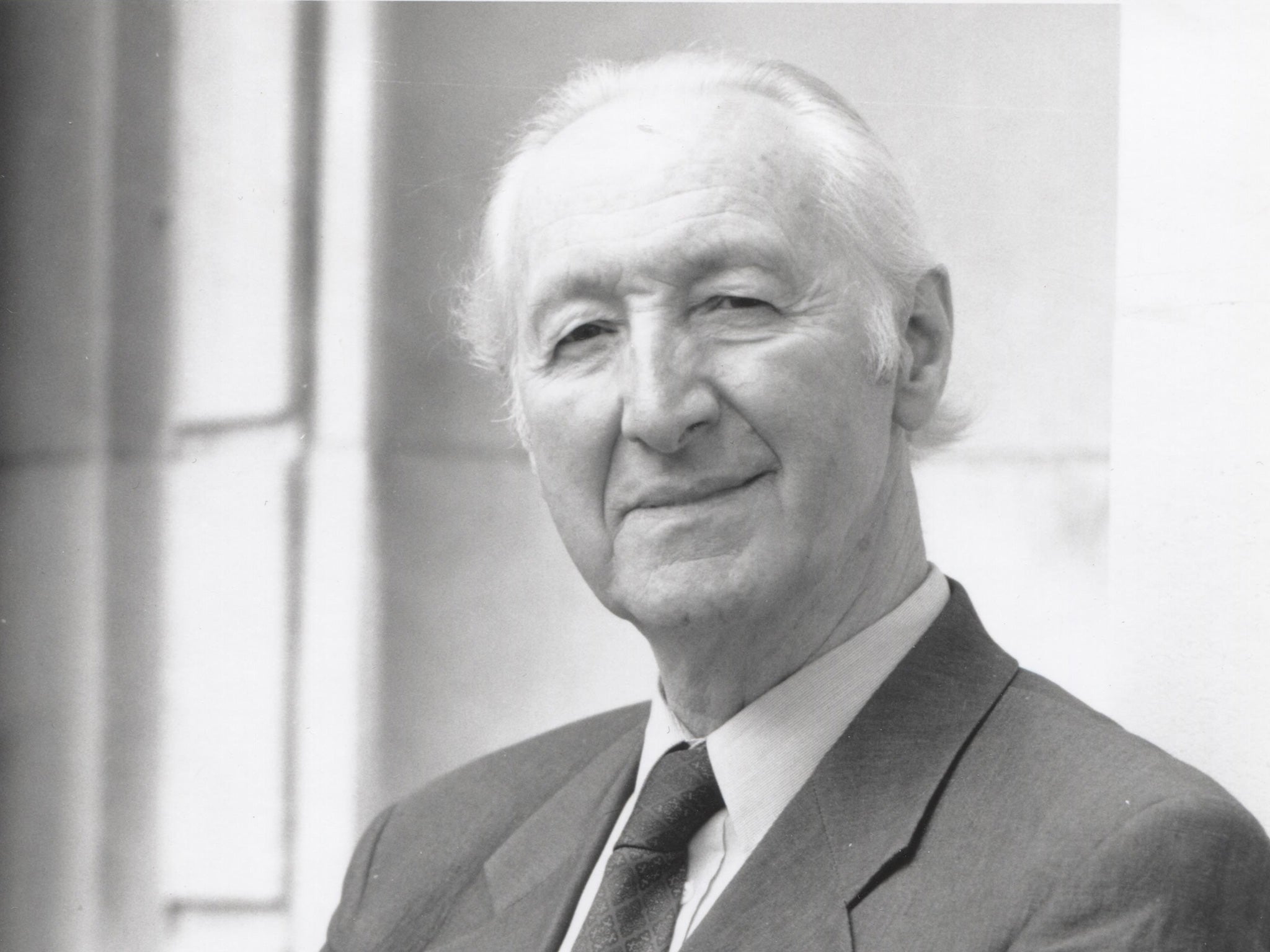Professor Donald Bradley: One of Britain's foremost inorganic chemists whose work was key to the growth of modern electronics

Don Bradley was one of Britain’s foremost inorganic chemists, a Royal Medallist of the Royal Society and Mond Prize Lecturer of the Royal Society of Chemistry.
He was born in London in 1924 and raised by an aunt and uncle who lived on the south coast. He became a pupil at Hove County School for Boys, and later, in the middle of the Second World War, he graduated with first class honours in chemistry from Birkbeck College, after attending evening and weekend undergraduate courses there while working as a technician in the Electrical Research Association at Alperton.
In 1943, Birkbeck College, where he began his doctoral studies, was an exciting place. The polymathic JD Bernal headed the Department of Physics, while a future President of the Chemical Society (now the Royal Society of Chemistry), William Wardlaw, was Head of Chemistry. Among Bradley’s contemporaries was Graham (later Sir Graham) Hills, who became Principal of Strathclyde University; Vernon Ingram, who ended his career as Professor at Massachusetts Institute of Technology, having first helped Max Perutz at the MRC Laboratory, Cambridge, to identify the sequence of amino acids in the blood of individuals suffering from sickle-cell anaemia; and Nikolaus Pevsner, the historian of art and architecture, who like Ingram, was a refugee from Nazi Germany. Bradley kept in active touch with Hills and Ingram up to the time of their deaths; he and Pevsner were fire-watchers together during their time at Birkbeck, a hair-raising but financially rewarding extracurricular activity for the young students.
As a lecturer at Birkbeck Bradley built up links with his former research student, the inventive Mark Faktor, at British Telecom. Together they did pioneering work on the so-called alkoxides of cerium, thorium, titanium, zirconium and hafnium. In 1959 he was appointed the first professor of inorganic chemistry at the University of Western Ontario, Canada, where he remained until 1965, when he accepted a professorship at Queen Mary College, London, where the then Head (Keble Sykes, Independent obituary, 18 June 1997) was building up and extending a powerful school of chemistry. Bradley himself became Head of Department (1978-82); he also served on the University of London Board of Studies in chemistry and was a member of its Academic Council and Senate. He played an active role in the RSC, being a member of Council and serving as Hon Secretary/Treasurer, Vice-President and President of the Dalton Division of Chemistry.
During his long “retirement” from 1986, when he was appointed Emeritus Professor and later Honorary Fellow of QMC, he continued his research. He wrote a definitive text, Metal Alkoxides, and from 1981-1996 served as editor-in-chief of the journal Polyhedron. From 1988-1992 he served with distinction as a Council Member and Hon Secretary of the Royal Institution of Great Britain (RI).
Of his numerous contributions to science, two merit elaboration here. In their dissolved state certain metals, typified by chromium or titanium, are stable only if they are joined (coordinated) to 4, 5, 6, even 7, 8, or 9 other atoms or groups of atoms, called ligands. A notable academically oriented advance made by Bradley was to show that these two metals could be rendered stable in solution when attached to just 3 ligands, provided the latter were bulky.
On the applied technological front, his work with Mark Faktor (sponsored by the Ministry of Defence and the Joint Opto-Electronic Research Scheme) showed how to prepare ultra-high purity gallium and indium, now extensively employed in modern photonics and electronics. This work was taken up by the Epichem Company who, along with BT, were awarded a Queen’s Award for Export.
Don Bradley was a gentle, kind, respectful and sensitive man, and also a superb lecturer. With his second wife, Ann, he was sublimely happy for the last 27 years of his life. Together they attended RI discourses and were ardent theatre-goers. When they were not travelling they enjoyed life at the Barbican and took full advantage of the arts centre, particularly the concert hall. Bradley enjoyed listening to classical music, which Ann ensured he heard almost without interruption during his long terminal illness.
Donald Charlton Bradley, chemist: born London 7 November 1924; Professor of Inorganic Chemistry 1969-1986, and Head of Department of Chemistry 1979-1983, Queen Mary College, London; FRS 1980; Royal Medallist 1998; married 1948 Joy Hazeldean (died 1985; one son), 1990 Ann Levy (one stepdaughter); died London 20 December 2014.
Join our commenting forum
Join thought-provoking conversations, follow other Independent readers and see their replies
Comments